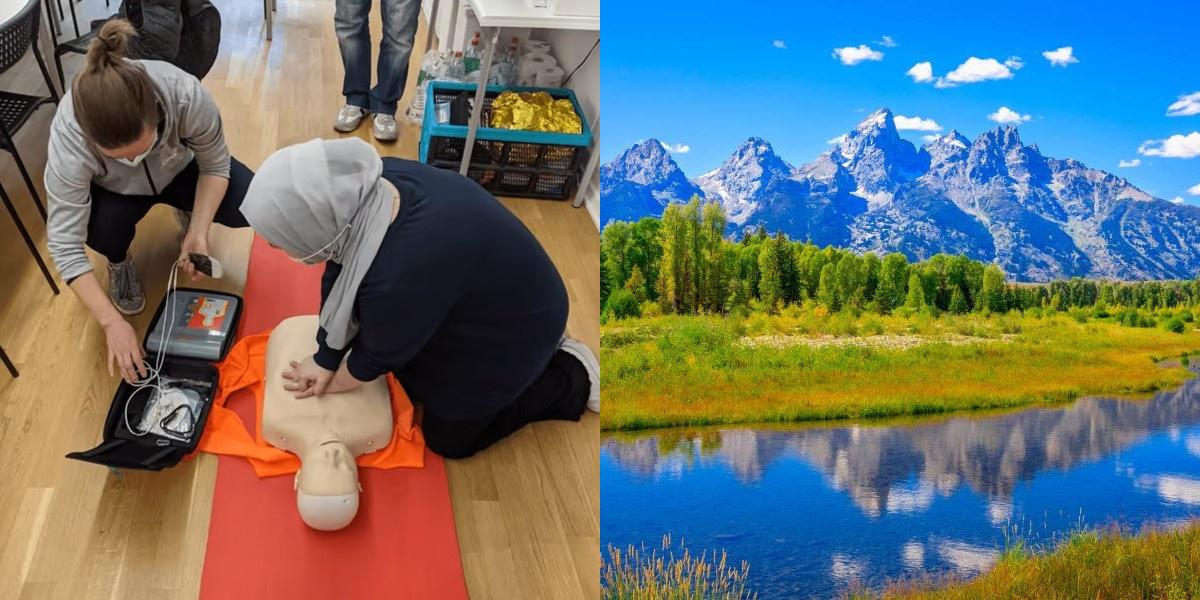What is a Paramedic?
Paramedics are highly trained medical professionals who provide advanced life support to patients in emergency situations. They are often the first responders to accidents, medical emergencies, and other critical incidents. Paramedics are skilled in assessing patients, administering medication, performing advanced medical procedures, and providing transportation to medical facilities.
The responsibilities of a paramedic include:
- Responding to emergency calls and providing immediate medical care
- Assessing the patient's condition and providing appropriate treatment
- Administering medications, intravenous fluids, and performing advanced procedures
- Monitoring vital signs and providing ongoing medical support during transportation
- Collaborating with other healthcare professionals to ensure continuity of care
Where Does a Paramedic Work?
Paramedics can work in various settings, including:
- Ambulance Services: Paramedics are often employed by ambulance services, where they respond to emergency calls and provide on-site medical care.
- Hospitals: Some paramedics work in hospital settings, where they provide advanced medical care in the emergency department or critical care units.
- Fire Departments: Many fire departments have paramedics as part of their team, responding to medical emergencies alongside firefighters.
- Search and Rescue Teams: Paramedics with specialized training may work on search and rescue teams, providing medical assistance in remote or challenging environments.
How to Become a Paramedic in Wyoming?
To become a Paramedic in Wyoming, individuals must first complete an accredited paramedic education program, followed by passing the National Registry of Emergency Medical Technicians (NREMT) exam to obtain certification. Once certified, they can then search for and apply to paramedic job opportunities in the state.
Requirements to Become a Paramedic in Wyoming
To become a paramedic in Wyoming, you must meet certain educational and legal requirements. These include:
- High school diploma or GED: You must have a high school diploma or equivalent to enroll in a paramedic training program.
- EMT-Basic certification: Before pursuing paramedic training, you must first become certified as an Emergency Medical Technician (EMT)-Basic.
- Completion of a paramedic training program: Wyoming requires aspiring paramedics to complete a state-approved paramedic training program, which typically takes 1-2 years.
- National certification: After completing the training program, you must pass the National Registry of Emergency Medical Technicians (NREMT) exam to become nationally certified as a paramedic.
- State licensure: Wyoming also requires paramedics to obtain a state license before practicing.
How do I get my Paramedic certification?
Becoming a paramedic is a challenging yet rewarding career choice. Paramedics are highly skilled healthcare professionals who provide emergency medical care to individuals in need. If you are interested in pursuing a career as a paramedic, there are several steps you will need to follow to obtain your certification.
1. Prepare for education: Begin by ensuring you meet educational prerequisites, typically a high school diploma or GED. Some programs may require additional qualifications like basic life support (BLS) certification or college-level courses in subjects such as anatomy.
2. Enroll in a paramedic training program: Once eligible, enroll in a paramedic training program offered by community colleges, technical schools, or universities. These programs typically last 1-2 years and provide comprehensive theoretical and practical training.
3. Gain clinical experience: During your training, you'll engage in clinical rotations to gain hands-on experience. These practical settings include hospitals, ambulances, and other healthcare environments, where you'll apply your knowledge under supervision.
4. Pass the certification exam: After completing your training and clinical experience, you must pass the National Registry of Emergency Medical Technicians (NREMT) certification exam. This exam assesses both your theoretical knowledge and practical skills.
5. Obtain state licensure: Upon passing the NREMT exam, you'll need to obtain state licensure to practice as a paramedic. Each state has its own requirements, which typically include submitting an application, paying fees, and providing proof of education and certification.
6. Commit to continuing education: Maintain your certification and licensure by participating in continuing education. This ongoing learning ensures you stay updated with advancements in emergency medical care and may involve completing continuing education courses periodically.
How do I get a job as a Paramedic?
After obtaining your paramedic certification and state licensure, you will be ready to start your career as a paramedic. Here are some steps you can follow to increase your chances of getting a job in this field:
1. Research job opportunities: Start by researching available job opportunities in your area. Check online job boards, hospital websites, and local EMS agencies for postings. Make a list of potential employers and keep track of their contact information.
2. Prepare your resume and cover letter: Create a professional resume and cover letter that highlights your education, training, and experience as a paramedic. Tailor your resume to each job you apply for, focusing on the skills and qualifications that match the position's requirements.
3. Build your network: Networking can be a valuable tool in finding a job as a paramedic. Reach out to professionals in the field, attend career fairs and conferences, and join professional organizations. These connections can provide you with valuable insights and potential job leads.
4. Apply for positions: Once you have identified job opportunities and prepared your application materials, start applying for positions. Follow the application instructions provided by each employer, and make sure to submit all required documents and forms.
5. Prepare for interviews: If you are selected for an interview, take the time to prepare. Research the organization, practice common interview questions, and come up with examples of how you have demonstrated your skills and abilities as a paramedic.
6. Obtain additional certifications: Consider obtaining additional certifications that can make you a more competitive candidate. For example, certifications in advanced cardiac life support (ACLS) or pediatric advanced life support (PALS) can demonstrate your commitment to ongoing professional development.
7. Stay current on industry trends: Keep up to date with the latest advancements and trends in the field of paramedicine. Attend conferences, read professional journals, and participate in online forums to stay informed and demonstrate your passion for the profession.
8. Consider volunteer or part-time opportunities: If you are having difficulty finding a full-time position right away, consider volunteering or working part-time as a paramedic. This can provide you with valuable experience and networking opportunities and may lead to full-time employment in the future.
Career Paths and Opportunities after Becoming a Paramedic
Once you have obtained your paramedic certification and started your career, there are several career paths and opportunities you can explore within the field of paramedicine. Here are a few examples:
-
Ambulance Services: Many paramedics work for ambulance services, responding to emergency calls and providing on-site medical treatment. This is the most common career path for paramedics and offers opportunities for both full-time and part-time employment.
-
Emergency Departments: Some paramedics choose to work in hospital emergency departments, providing initial assessment and treatment to patients who arrive by ambulance. This can be a fast-paced and challenging environment, but it also offers opportunities for career advancement and specialization.
-
Flight Paramedics: Flight paramedics work on medical helicopters or airplanes, providing critical care to patients who need to be transported to a hospital quickly. This is a specialized field that requires additional training and certification, but it can be a rewarding and exciting career choice.
-
Industrial Settings: Paramedics may also find employment in industrial settings such as factories, construction sites, or oil rigs. These paramedics are responsible for providing medical care to employees or workers who are injured or become ill on the job.
-
Education and Training: If you have a passion for teaching and mentoring others, you may consider a career in education and training. Many paramedic programs hire experienced paramedics to teach courses or serve as clinical instructors.
-
Management and Administration: As you gain experience and knowledge in the field of paramedicine, you may be interested in pursuing a career in management or administration. This can involve overseeing an ambulance service, managing a team of paramedics, or working in a hospital or healthcare organization in a leadership role.
-
Specialized Fields: Paramedics can also choose to specialize in a particular area of practice, such as pediatric or neonatal care, trauma care, or critical care. These specialized fields may require additional education, training, or certification, but they offer opportunities for career advancement and increased responsibility.
The field of paramedicine is constantly evolving, with new advancements and opportunities emerging all the time. By staying current on industry trends, continuing your education, and seeking out new experiences and challenges, you can continue to grow and develop your career as a paramedic.
Frequently Asked Questions




